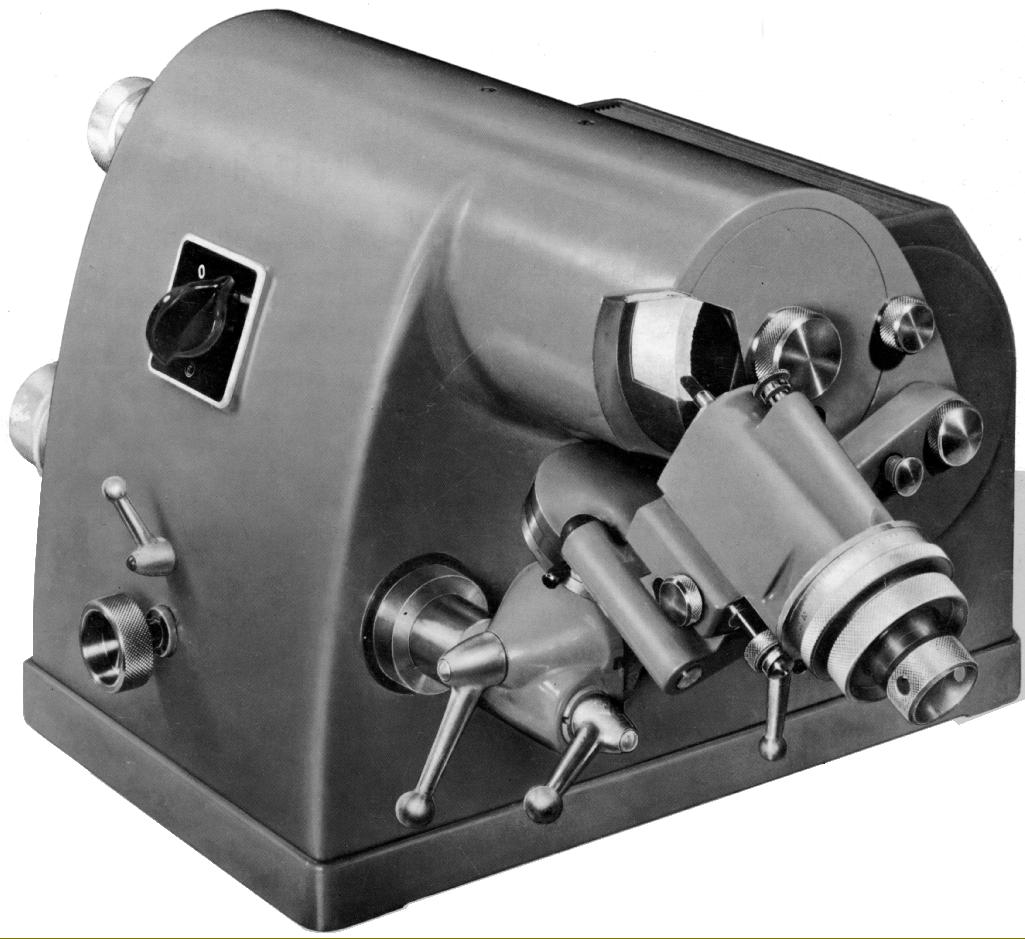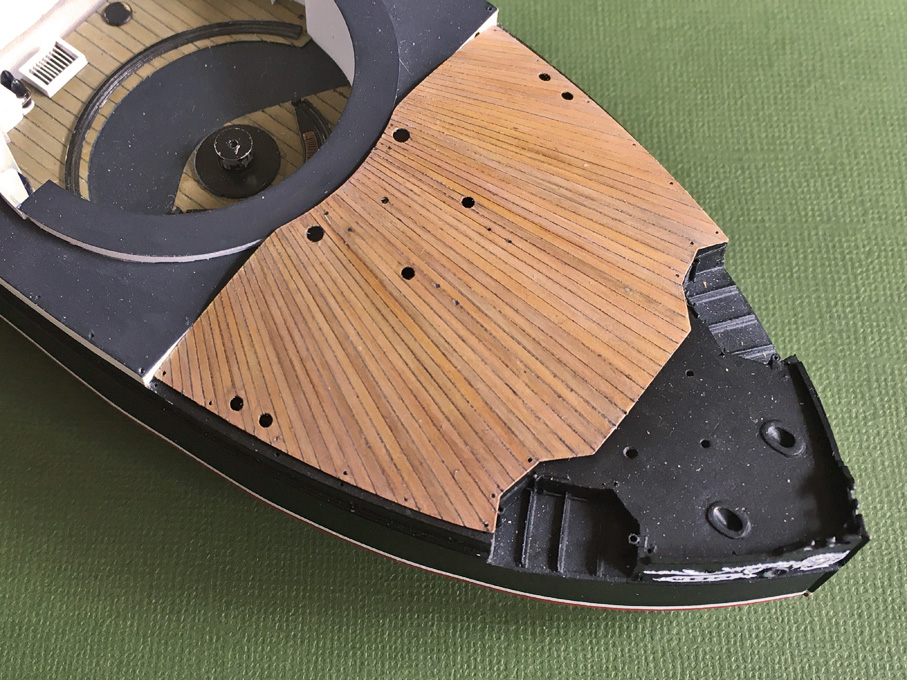-
Posts
6,360 -
Joined
-
Last visited
Content Type
Profiles
Forums
Gallery
Events
Everything posted by wefalck
-
Thank the zealous law-makers, the custom-officials are only executors - today no one uses common sense and judgement anymore in case some greedy lawyer finds a way to sue them. BTW in earlier post I erroneously wrote the German Ivory Museum is in Michelstadt, it is in Erbach, another town nearby: https://elfenbeinmuseum.de/.
-
In Germany these nuts are sold as 'stone-nuts/Steinnüsse' and have been used since about 200 years to make buttons (apart from using antlers and horns) - before plastics (first celluloid and bakelite, then hydrocarbon-based plastics) took over. I have to make a mental note again, to get some samples, because I am still looking for a dense, homogenous but not brittle material to make really small blocks (say 1 mm long).
-
There are precedents for ivory antique containing shipmodels (and other artefacts indeed) sent to exhibitions abroad that were held up by customs and were only released after a long battle. It's not necessarily the fault of overzealeous customs officials, but that of imprecise and summary legislation. So I would rather not use any ivory, even if mamuth ivory is legal. In Michelstadt/Odenwald (Germany) there is a traditional centre of ivory working and an ivory-carving school, which has been hit very hard by the ban on ivory. However, they today use man-made substitutes. These don't seem to be easy to obtain on the market, but I once bought some small pieces for a restauration project there from a workshop.
-
I am not a carver at all, but I can see, where the texture of the chosen wood would pose serious challenges at this small scale. I only know Wengé as wood for furniture (and don't like it's colour and texture, but it seems to be fashionable these days) and would have doubts, that it would be suitable for small-scale carving. And, of course, I like the result of your carving efforts both, the execution of the carving itself and the colour of the wood.
-

Bragozzo by maurino - FINISHED
wefalck replied to maurino's topic in - Build logs for subjects built 1901 - Present Day
A seldom seen subject here. As I have a soft spot for those boats from the Venice lagoon and I will follow the progress. That book has been sitting on my shelf also for some time now - I think I bought in the bookshop 'Carta di Mare' in Venice or from Gilberto Penzo. The 'Padiglione delle Barche' of the Museo Storico Navale in Venice preserve a couple of Bragozzi from the late 19th/early 20th century: https://www.maritima-et-mechanika.org/maritime/venezia/museonavalevenezia-3.html. I took a few pictures in case one day I also want to build one. -
If you are sailing before the wind, the boom would have to swing out as much as the shrouds permit ... the gaff may be steadied by guys, but not all ships had them. The flag-halliards seem to have been run in a somewhat haphazard fashion, whatever was deemed to be convenient at the time. Thus, I have seen many contemporary images, where the halliard is let down to a cleat or belaying pin at the aft bulwark. Another option is a cleat on the boom. In general, the halliard is somewhat inclined forward, so that the flag unfolds and it recognisable when there is no wind.
-

Trying to understand white balance
wefalck replied to Gaetan Bordeleau's topic in Photographing your work. How to do this.
After school I wanted to join the navy for s three-year officer‘s course. Given my father‘s colour vision isues, he arranged for me to be thoroughly tested at the university hospital. They put me through the paces, such as aligning some 30 cubes with colours ranging from purple to violett in the right order. I came out with flying colours so to speak. -

Trying to understand white balance
wefalck replied to Gaetan Bordeleau's topic in Photographing your work. How to do this.
Me too actually, but the workbench now only has LEDs and that seems to work well, althought they are different LEDs with no guarantee that they have same (warm) temperature 🫢 -

Trying to understand white balance
wefalck replied to Gaetan Bordeleau's topic in Photographing your work. How to do this.
Colour vision is indeed a funny thing. My father was the typical red/green colour-blind, but may have had overall a limited colour vision. His view of what was 'green' was more defined by convention, than by real vision it seems: I remember that he sent me once to fetch a green book from his study, which I didn't find, because the cover was actually blue ... Colour-photographers of old used a colour-temperature meter to select filters to compensate for unwanted colour tints brought about by different light temperature in the course of the day, when working in the shadow etc. The meter was used together with a 'neutral grey card'. I still own one of those meters inherited from my father, but not normally use. I rarely play around with the colour-temperature setting of the digital camera, but rather compensate in Photoshop when post-processing my RAW images. In Photoshop you can either select the colour-temperature summarily or you can select an area in the image that you want to appear 'white' or 'neutral grey'. As I normally do not scientific or archival photography, the choices are based on aesthetics and not on trying to achieve a 'true' colour of an object. One thing to avoid is mixing lights from technologically different sources, such as LED and incandescent or daylight. It is virtually impossible to correct such images, as the areas lit by one source will always be 'wrong', when correcting for another source. -
No, not for gem-stones, but you are right, these have a similar 'goniometer-head'. The Deckel SO is a tool-grinder for single-lip tools, such as D-bits, engraving cutters, and can be also used for chisels. The tool can be turned around its axis at a given angle to the grinding wheel, which is needed for hollow gauges.
-
Ideally, one should have something like the Deckel SO (or one of the various old or modern clones), perhaps with a diamond honing wheel, for sharpening: Image from http://www.lathes.co.uk/deckel/page3.html To make the gauges one probably needs something more complex, with knife-edge grinding wheel. Or one starts from silver-steel/drill rod, drills a hole on a lathe and then grinds away the rest. This then needs to be properly hardened and tempered. Not sure, how V-gauges are made.
-

Miniature Russian carving tools
wefalck replied to druxey's topic in Modeling tools and Workshop Equipment
... and one shouldn't anyway now. In principle, anyone with a good tool-grinder could make such tools from round HSS-blanks. -

OUTSTANDING Mini Drill
wefalck replied to Bill Jackson's topic in Modeling tools and Workshop Equipment
Looks like the thingy that was given to me by my wife with good intentions, but I found the speed too high for most practical purposes. Mine has three speed settings, but it starts from the highest and then steps down. With all battery-operated equipment it has the disadvantage that one cannot start and stop it free-hand, i.e. with a foot-switch ... Do the inserts have the usual 2.34 mm diameter shaft? -
I am still pondering the kit. I wouldn't build in WD-finish, but rather as a normal road-locomotive. The WD specifications (for good reasons) seems to have included unusual combinations of features, such a dished fly-wheel (as for road-locomotives, to not frighten horses on the roads) and wheels as for agricultural engines.
-
Everything you need to know about gondole and other Venetian boats: https://www.veniceboats.com. Gilberto Penzo also has a little shop in Venice, where he sells his books, the plans and the kits he has designed.
-

Proxxon mini lathe verdict
wefalck replied to Srenner's topic in Modeling tools and Workshop Equipment
Are the collets really made from plastic? I am shocked, as PROXXON has been priding themselves rightly for their metal collets on other machines. -
Well, at 1/96 scale most woods would have really a too coarse grain, particularly those commercial decks made from veneer. Unlike wooden shipmodels, where the builder may want to show his woodworking etc. skills, plastic models usually are finished to show how the ship (may have) appeared in real life. Mixing visible wood with plastic may look incongruent in style. My personal choice would be to replace the injection moulded deck with some styrene, lightly engrave the plank seams, lightly scrape down any raised burrs, and build up the coamings etc. from styrene strips. Then paint the deck in wood colour (I use these days mainly Vallejo acrylics), seal this paint with gloss varnish, take a black 0.1 mm felt-tip pen and draw out the seams, wiping off any excess immediately, so that the black only stays in the engraved lines. Seal again with satin varnish and then slightly tint each individual plank with veery light washes of burnt umber. Afterwards apply a very light white wash all over. The result should look like this:
About us
Modelshipworld - Advancing Ship Modeling through Research
SSL Secured
Your security is important for us so this Website is SSL-Secured
NRG Mailing Address
Nautical Research Guild
237 South Lincoln Street
Westmont IL, 60559-1917
Model Ship World ® and the MSW logo are Registered Trademarks, and belong to the Nautical Research Guild (United States Patent and Trademark Office: No. 6,929,264 & No. 6,929,274, registered Dec. 20, 2022)
Helpful Links
About the NRG
If you enjoy building ship models that are historically accurate as well as beautiful, then The Nautical Research Guild (NRG) is just right for you.
The Guild is a non-profit educational organization whose mission is to “Advance Ship Modeling Through Research”. We provide support to our members in their efforts to raise the quality of their model ships.
The Nautical Research Guild has published our world-renowned quarterly magazine, The Nautical Research Journal, since 1955. The pages of the Journal are full of articles by accomplished ship modelers who show you how they create those exquisite details on their models, and by maritime historians who show you the correct details to build. The Journal is available in both print and digital editions. Go to the NRG web site (www.thenrg.org) to download a complimentary digital copy of the Journal. The NRG also publishes plan sets, books and compilations of back issues of the Journal and the former Ships in Scale and Model Ship Builder magazines.






